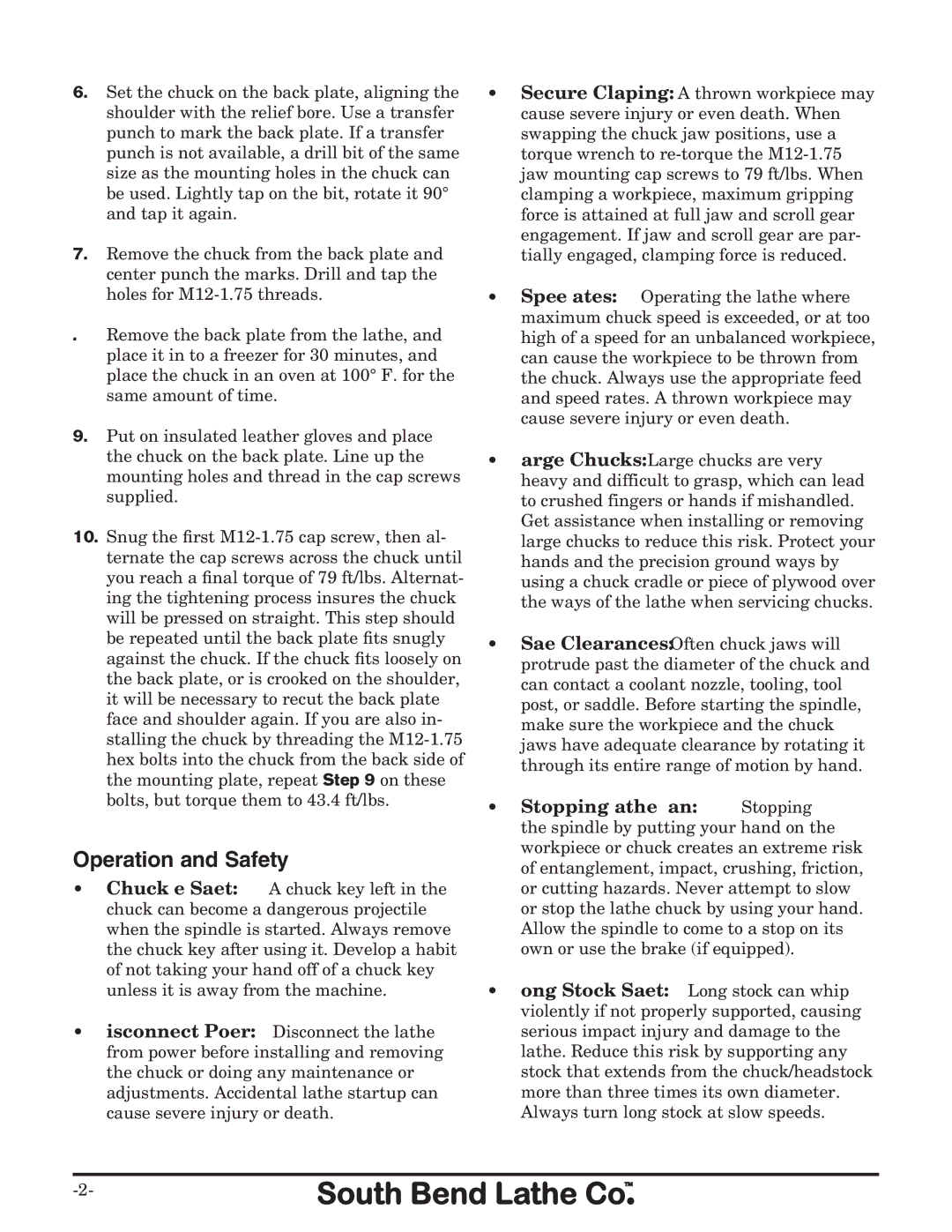SB1310 specifications
The Southbend SB1310 is a prominent model in the world of commercial kitchens, designed to meet the demanding needs of chefs and food service operators. This gas-powered range is renowned for its durability, versatility, and top-notch performance. Built with a heavy-duty construction, the SB1310 can withstand the rigors of a bustling kitchen environment.One of the standout features of the Southbend SB1310 is its impressive cooking capacity. With ten powerful burners, each producing 30,000 BTUs, this range is capable of handling multiple pots and pans simultaneously, making it ideal for large-scale food preparation. The range also offers a spacious cooking surface, allowing for a variety of cooking methods, from sautéing and frying to boiling and simmering.
Equipped with a robust stainless steel exterior, the SB1310 is not only aesthetic but also easy to clean and maintain. The stainless steel finish offers added durability, resisting scratches and dents, which are common in busy kitchens. Additionally, the range includes removable burner heads and spill trays, making cleanup a breeze after a long day of cooking.
The SB1310 also showcases Southbend's commitment to innovation with its advanced technologies. The range features a patented flame failure safety device that ensures gas is cut off in the event of a flame outage, ensuring a safer cooking environment for users. Furthermore, the range is designed with energy efficiency in mind, helping operators keep their energy costs down while still achieving high-level performance.
Another notable characteristic of the SB1310 is its versatility. In addition to the traditional burners, the range can be equipped with optional accessories such as griddles or charbroilers, allowing for even more cooking methods and menu options. This adaptability makes the SB1310 a valuable asset for any kitchen, from restaurants to catering services.
The Southbend SB1310 is not just a piece of kitchen equipment; it is a powerful ally for chefs and food service professionals. Its combination of durability, cooking power, and safety features make it a top choice for those looking to optimize their kitchen operations while delivering exceptional meals. With the SB1310, culinary creativity knows no bounds.
